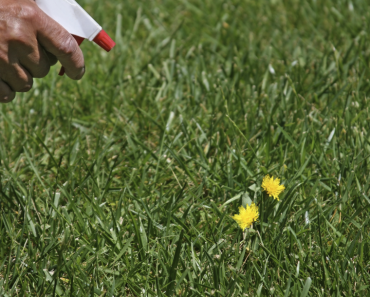
The State of Georgia has always been rich in agriculture, giving local tables and other states, with easy vegetables to grow like apples to sweet Vidalia onions in the east, peaches and other fruits of central areas, and vegetables of southern counties.
Vegetables and fruits are a billion dollar industry. According to the Georgia Farm Bureau, which stays abreast of legislation and regulations that affect the agriculture industry in the State:
- Agriculture contributes approximately $72.5 billion annually to Georgia’s economy, based on a researched made by the University of Georgia’s Center for Agribusiness & Economic Development.
- The 2013 total Farm Gate Value for the state was $13.6 billion.
Furthermore, Georgia is the number one perennial state in producing peanuts, chickens, pecans, and blueberries. Other food products that are also at the top includes cotton, watermelon, eggs, rye, sweet corn, bell peppers, tomatoes, peaches, onions, cantaloupes, and cabbage. Every county in the State of Georgia has some form of farming production.
And so, it is no wonder why you, too, are interested to grow vegetables in one of the farming and gardening havens in Georgia. If you want to start your own garden there, here are 10 vegetables that you can easily grow. For those that need supporting posts or fences, consider getting one of the best post hole diggers to date.
Vidalia Onions
There are close to 100 registered farmers who are growing and marketing this good tasting, sweet onion, within the town of Vidalia in Toombs County, being the hub. Local farmers produce over 12,000 acres of onions each year, with four and five million 40 pound units are produced in Vidalia annually. The Vidalia onion grows for 8 months, with its seeds planted in the fall and its harvest in late April and May. Vidalia onions are shipped throughout the country, 5% of which is shipped to Canada.
Reid Larry Torrance of New Georgia Encyclopedia revealed that:
“The Vidalia sweet onion is perhaps the greatest agricultural success story in Georgia’s history. Mose Coleman, a Toombs County farmer, is believed to have been the first grower of the now popular commodity. In 1931 Coleman discovered that his onions were not hot, but rather mild. He managed to sell his onions for $3.50 per fifty-pound bag, a very good price at the time.”
Sweet Corn
Why grow sweet corn? Well, the Georgia Department of Agriculture stressed out that:
“Sweet corn is a delicious part of summer’s harvest and has been for centuries. Whether eaten right off the cob or used in many wonderful dishes, corn’s crunch and sweet taste make it one of America’s all-time favorite vegetables. Whether enjoyed “on the cob” or cream style, corn is low in fat, very low in sodium, cholesterol free and a good source of vitamin C.”
Sweet corn on the cob grows best in warm weather, like Georgia’s climate; thus it grows in every county. Georgia corn is supplied throughout the summer, from May to September, with field temperatures higher than 86 °F, then to post-harvest, cooling it before the conversion of sugar to starch begins to reduce its sweetness. Sweet corn production in Georgia averages to 350,000 acres, but field corn is mainly used for livestock feed and ethanol production.
Cabbages
Cabbage helps to make up 20% of Georgia’s vegetable industry with nearly 30,000 acres in production, with volumes peaking in May, accounting for more than 10% of the U.S. crop production during December to January and May to June. The Atlanta area accounts for about 2/3 of Georgia’s shipments to Mississippi, Boston, Cincinnati, and Chicago. Cabbage can be grown in varied soil types and are slightly drought tolerant.
“The trick to growing cabbage is steady, uninterrupted growth. That means rich soil, plenty of water, and good fertilization constantly applied to the cabbage seeds,” as highlighted by Bonnie Plants.
“The trick to growing cabbage is steady, uninterrupted growth. That means rich soil, plenty of water, and good fertilization,” as highlighted by Bonnie Plants.
Greens
A news from Mother Earth states that, “Hardy, productive, and delicious, growing greens is one of the easiest decisions you can make when you’re putting in a vegetable garden.”
Leafy greens are produced in varied soil conditions that Georgia provides, with planting dates in the southern regions running from August to June, eastern area production begins from mid-February to late April, fall production starts in early August to early September and northern production begins in May to June with the season ending in September to October. The counties of Colquitt and Tift County lead in production of 17,543 acres and other counties that contribute are Berrien, Cook, Echols, Brooks, Grady, Worth, Pierce, Toombs, Macon, Turner and Union.
Potatoes
In Georgia, potatoes are available from the first part of July until the following spring because they grow exponentially in many areas with well-drained, loose soil. Georgia produces a variety of potatoes, especially the Irish and less Russets that do not do well in this state. There are currently two primary markets for Georgia’s sweet potatoes and Irish potatoes: fresh market and processing market.
“The potato ranks with rice and wheat as one of the world’s leading food crops. It is the number one vegetable crop, grown in nearly every country of the world.” Source: walterreeves.com
Sweet Potatoes
Georgia’s sweet potatoes ranked number 24 in acreage, 22nd in farm gate value at $2.5 million, and a total production of 4,422 tons or 88,448 CWT. The five sweet potato varieties grown in Georgia grows great in its long, warm climate and can be harvested in about 90-120 days after planting, and then air dried to keep its sweetness.
Are you aware of this?
“The sweet potato is a Native American plant. It is high in calcium, potassium, and vitamins A (which helps prevent night blindness) and C. Also, it is rich in dietary fiber and has small amounts of iron. Sweet potatoes are a healthier alternative to white potatoes, which have a high glycemic index. This means that starch from a white potato is quickly metabolized, leading to a rapid increase in blood sugar. Sweet potato starches are metabolized at a slower rate.” Source: extension.uga.edu
Tomatoes
Under custom laws, the Supreme Court ruled, tomatoes are vegetables and in Georgia they are harvested in 3 stages, and is grown nearly year-round in this state’s long temperature months that are between 70º and 80º. As a Georgia resident, you can grow tomatoes indoors and outdoors, depending on where you live.
You can find cherry tomato seeds here.
However, if you want tomatoes like in the image to the right and above, look below:
Snap Beans
Georgia ranks around second in U.S. snap bean acreage, with most of the southern counties producing nearly all of the commercial snap beans. The counties include Sumter, Echols, Lee, Decatur, Tift, Mitchell, Macon, Crisp, Toombs, and Seminole. About 50% of the Georgia snap bean acreage is planted in the spring, and 50% is planted in the fall. Other high producing legumes in Georgia, includes lima beans, soybeans, peas, and more.
“Dried snap beans called “Leather Britches” remind Georgians of a time in Appalachia before refrigeration when drying was the way to preserve the beans for the winter. The term leather britches comes from how the pods of snap beans look when they are drying and shriveling strung with a needle and thread on a line. The leather-britches are soaked overnight before cooking. Pickling in a brine and sometimes with vinegar added was another way to keep snap beans for the winter.” Source: gpb.org
Click to get snap been seeds here.
Bell Peppers
Georgia’s bell pepper crops generated nearly $27 million in farm gate value in 2014. Pepper varieties are very easy grow, and bell peppers are ranked among Georgia’s most valuable vegetable and is harvested both in spring and fall.
“Irrigation is essential to produce consistent yields of high quality peppers in Georgia. Rainfall amounts are often erratic during the pepper growing season and peppers are often grown in sandy soils which have a low water holding capacity. This combination of factors makes supplemental irrigation necessary for commercial pepper production.” Source: agrisk.umn.edu
Because the ample water needed, we recommend checking out our reviews of top rated soaker hoses.
Okra
Not a fan of Okra? This vegetable should actually be on your top list because, “Okra is a great source of Vitamin C and its fiber helps to maintain healthy intestines and balance out blood sugar levels. Okra also helps to promote the growth of healthy bacteria in your intestines. The seeds are a great source for protein.” Source: georgiaorganics.org
Okra is grown in every county in Georgia, with most of its production under contract for the soup and frozen food industry, but unfortunately, law enforcement often mistakes its leaves for marijuana and have raided farmers. The three varieties of okra requires Georgia’s soil for its excellent water holding capacity, with production in May, June, July, August, September, October, where the first harvest is ready about 2 months after planting.
Get Okra seeds from Amazon here.
In addition to fruits, vegetables are Georgia’s top cash crops for local marketing and as export produce to other northeast U.S. states and Canada. Georgia has become a leader in the United States farming industry.
Vegetable production in Georgia is occurring during every month of the year. Many other, cost-effective and easy to grow vegetables in Georgia’s climate and soil, includes pumpkins, cucumbers, carrots, squash, eggplant, beets, broccoli, leek, lettuce and so much more.
Outdoor markets like The Atlanta State Farmers Market and the many farmer markets in every county in the southeast, have significantly increased Georgia’s agricultural economy. In addition, Georgia is one of the southern states that features pick your own farms and orchards for all of their produce food items.






























